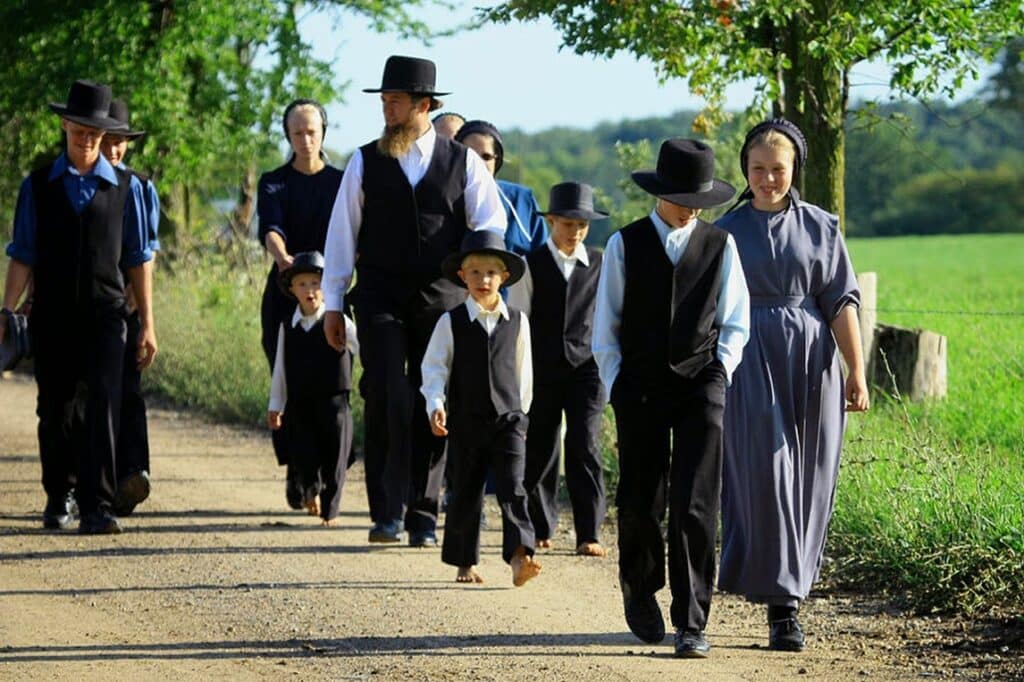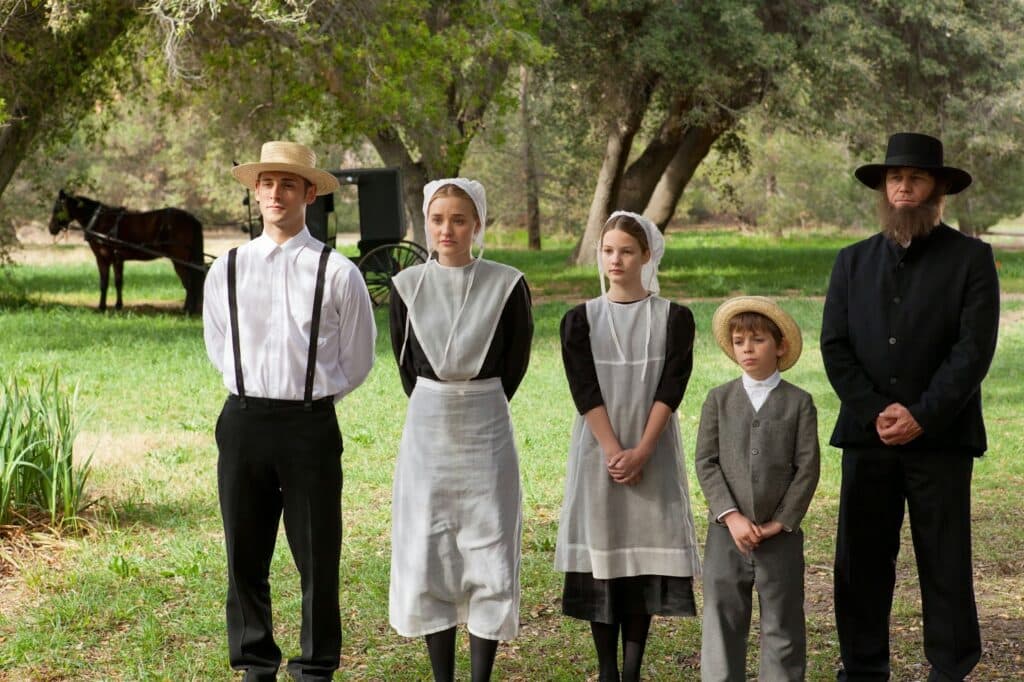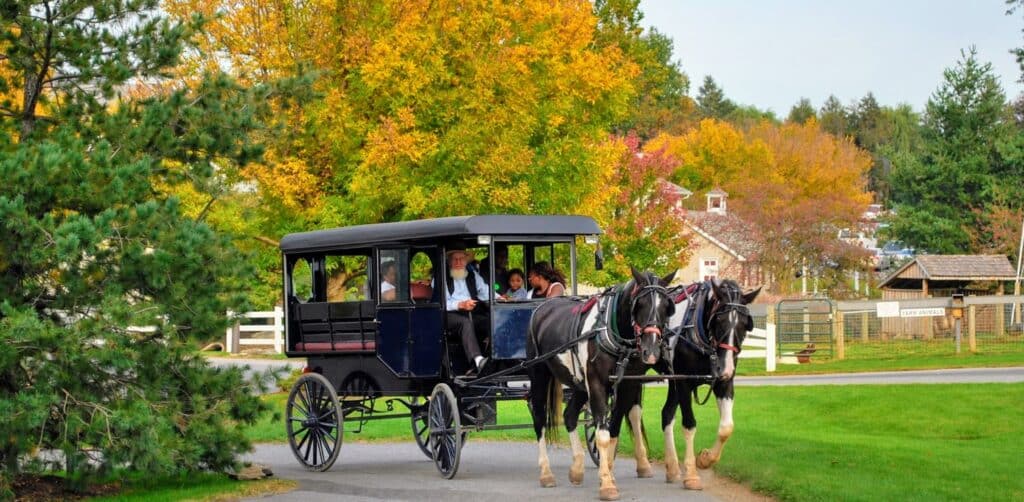Origins of the Amish movement
The origins of the Amish movement are set in the 16th century in the Anabaptist-Mennonite branch of the reform.
Although the Mennonite are not well known, but this is also the case of Lutherans or Calvinists named after Luther or Calvin, the Mennonite are involuntarily named after Menno Simons, Dutch priest and reformer (1495 – 1561).
Involuntarily, since the real origin of the movement is set in Switzerland in 1525. The reform initiated in Zurich by Zwingli, undergone its own jolts: profound divergences of opinion appear between the reformers, such as the separation of the Church and the Power, the usage of violence or the practice of Baptism.
In the heart of the debate, Conrad Grebel, a close theologian to Zwingli, Michaël Sattler, former prior of the Sankt Peter convent in the Black Forest and co-writer of the first confession of faith from the movement called « Brethren Agreement » in 1527, PilgramMarpeck, an engineer from Tyrol hired by the city of Strasbourg and fervent defender of the non-violence, and many more enrolled in the path of a Church more in accordance with the Christian communities of the first centuries.
Those that a thorough reflection had led to refuse children’s baptism and to recognize that adults’ baptism on confession of faith in GOD by Jesus the CHRIST; has been nicknamed “Anabaptists” in other words rebaptizers. Persecuted, they emigrated to Germany, Alsace, the Montbeliard Country, Holland, where the authorities were disposed to welcome them.
The course of history brought their descendant to flee again towards other countries and other regions such as Russia, the Mauraise, North and South America …


Birth of the Amish movement
Sainte-Marie-aux-Mines, dependant on the Ribeaupierre lordship, took in a large number of refugees, such as reformed Huguenots and Anabaptists. These two communities got on well and had even common religious celebrations.
These two communities got on well and had even common religious celebrations.
It’s in this « Val d’Argent » that the Amish movement were born in 1693 at the instigation of Jacob Amann, a Swiss preacher born in Simmental.
According to his conviction, the Christian assembly should live according to the Bible principles and such as they were understood and accepted by the Elders of the assembly.
This Christian community, named « Amish » appears more to a religious order than a standard Church, because of the mutual aid and because of the discipline lived actively and voluntarily within the group, what sets it apart fundamentally from other Churches.
In the revolution, the institution of the compulsory military service in France precipitated the emigration of the Amish towards the New World. From now on France and more widely Europe offered no more place to such a Christian community.
The fact remains that the Amish movement, today implanted well in Pennsylvania and in other states and North American parts of the country, arises for a part of this region of Alsace.
It is a part of history as a branch of the Anabaptist movement and has numerous links with the Mennonite Churches, in particular in the field of aid to the underprivileged persons in the world.
What about today ?
The Mennonites
Today Mennonites identify themselves with the Churches which refer to Anabaptist principles and which, thanks to the work missionary and social, discreet and patient, became established on all the continents. To live in communion is demanding. It takes consistency, realism and perseverance. It is an apprenticeship that asks for faith, hope, trust, forgiveness and brotherly love. This process must start at home and in local assemblies. Then take part in the world communion, with all that it involves, contribute to the growth of the life and the testimony of communities. This is the challenge to face as hope of the future. At the world level, the movement account 1.617.000 baptized members among whom 524.000 in North America, 592.000 in Africa, of which a majority in the southern hemisphere.
In France the Mennonites, are approximately 2.000, distributed in around thirty assemblies located largely in a big northeast quarter of the country. These assemblies are grouped in the Association of the Mennonite Evangelic Churches of France (AEEMF). Mainly managed by laymen, every local assembly is autonomous. Various ministries are exercised there: elders, clergyman, deacon … The members live generally thirty kilometers around of the place of worship, where the assembly meets on every Sunday for the Sunday celebration. The members come in family, the children and the young people are gathered for an education adapted to their age. The social commitment of the Mennonites results for several years by their implication in the development and the management of establishments in favor of handicapped persons, of elderly, and of children placed by social services. Diverse actions are carried out in favor of victims of cataclysms, wars and against the poverty in the world.

The Amish
The Amish mainly live in the countryside, they are farmers, craftsmen, storekeeper, etc. they don’t have any specific place of worship but their houses are usually build to gather a lot of people. Alternately they meet for a day of assembly where the reading of the Bible and the comments play an important role, interrupted with old hymns. The days of assembly are also an opportunity to speak about many subjects. It is the place of the communion and the communication. Amish are characterized by the mutualization of the risk: the assembly acts as a substitute for the insurance in case of hospitalization or when the fire causes important damage. That a stay at the hospital becomes necessary, and it is the group which assumes the risk, that a fire declares itself, and from the next day, the community meets on the scene of the disaster, tidy up, cleans and evacuates the rubble before undertaking the reconstruction. The men are on the construction site, the women prepare the meal: the disaster is transformed into community party.
